I’m not one to get excited about cleaning products, but Lysol Air Sanitizer has changed the game for me. This isn’t just another air freshener masking odors with a floral scent—it’s a powerhouse that tackles airborne germs and odors, leaving your space feeling genuinely clean.
Whether you’re battling pet smells, lingering cooking odors, or just want peace of mind during flu season, this product delivers. I’ve tested it in my home, and I’m convinced you need this in your life.
Trust me, it’s worth every penny for a fresher, safer home environment.
My Experience With Lysol Air Sanitizer
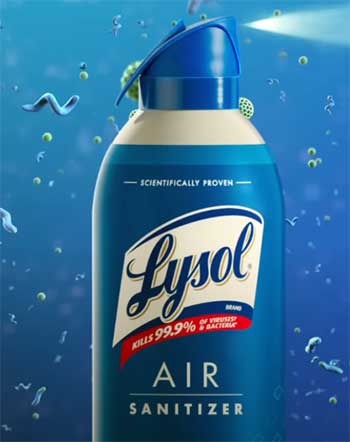
Picture this: I’m hosting a small dinner party, and the kitchen is filled with the aroma of garlic and onions from my attempt at homemade pasta sauce.
The vibe is great, but the lingering smell? Not so much.
I’d tried air fresheners before, but they just layered a fake lavender scent over the problem.
Then I discovered Lysol Air Sanitizer in White Linen, and it was a revelation.
I followed the instructions—closed the windows, shook the can, and sprayed toward the ceiling for 30 seconds.
After waiting 12 minutes and reopening the room, the air felt crisp, clean, and odor-free. It wasn’t just masking the garlic; it was gone.
I’ve used it in my bathroom after my cat decided the litter box was her personal art project, and the results were just as impressive. The Simple Fresh scent is subtle, not overpowering, and it doesn’t scream “I just sprayed something chemical in here.”
What struck me most was the peace of mind. Knowing it’s the first EPA-approved spray to kill 99.9% of airborne viruses and bacteria, like those pesky flu germs or coronaviruses, made me feel like I was doing something proactive for my family’s health.
I’ve even used it in my home office before Zoom calls to ensure the space feels fresh, especially when I’ve been cooped up for hours.
The canister is easy to handle, with a lock to prevent accidental sprays, which is a godsend if you have curious kids or pets. I’ve tried all three scents—White Linen, Simple Fresh, and Light Breeze—and each feels clean without being cloying.
My only gripe? The 12-minute wait time can feel like forever when you’re in a rush.
But honestly, the results are worth it. I’ve made it part of my routine, especially during cold season or when guests are coming over. It’s become my go-to for keeping my home feeling like a sanctuary, not a germ-filled battleground.
Pros of Lysol Air Sanitizer
- Proven Germ-Killing Power
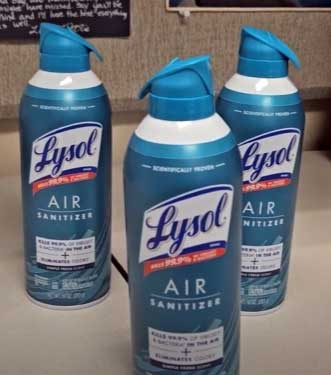
Let’s talk about the big win: Lysol Air Sanitizer isn’t just about making your room smell nice.
It’s the first spray approved by the EPA to kill 99.9% of airborne viruses and bacteria, including flu viruses and coronaviruses, in just 12 minutes.
I’ve used it during winter when my kids bring home every sniffle from school, and it gives me confidence that I’m reducing the spread of illness.
The science backs it up—Lysol partnered with aerobiology experts to develop a formula with hygroscopic molecules that latch onto and destroy airborne pathogens.
That’s not just marketing fluff; it’s a game-changer for anyone who cares about clean air.
- Odor Elimination That Actually Works
Unlike those air fresheners that just slap a fruity scent over your gym bag stench, Lysol Air Sanitizer eliminates odors by targeting the bacteria causing them. I’ve sprayed it in my living room after my dog tracked in that unmistakable wet fur smell, and within minutes, the air was neutral—not perfumed, just clean.
The White Linen scent is my favorite; it’s fresh without feeling like I’ve walked into a candle shop. Whether it’s cooking odors, pet smells, or that musty basement vibe, this spray tackles them without leaving a sticky residue on my furniture.
- Easy to Use
You don’t need a PhD to figure out how to use this. Shake the can, close the doors and windows, spray for 30 seconds toward the ceiling, and leave the room. It’s that simple. The canister’s design is intuitive, with a lock to prevent mishaps.
I’ve used it in rooms of all sizes, and the spray disperses evenly without dripping or staining my carpets. It’s become a no-brainer addition to my cleaning routine, especially in high-traffic areas like the kitchen or bathroom.
- Subtle, Pleasant Scents
The three fragrances—White Linen, Simple Fresh, and Light Breeze—are a breath of fresh air, literally. They’re not overpowering like some air fresheners that make you feel like you’re choking on perfume.
I find the Simple Fresh scent perfect for bathrooms, while White Linen gives my living room a clean, laundry-like vibe. Even my husband, who’s sensitive to strong smells, doesn’t mind these. They linger just long enough to feel fresh without overwhelming your senses.
- Versatility for Any Space
This spray works everywhere—bedrooms, bathrooms, offices, even cars. I’ve used it in it in my minivan after a particularly messy soccer practice, and it made the interior feel like new. It’s great for small spaces like closets or larger areas like living rooms.
The fact Puritan fact that it’s safe for homes with pets and kids (when used as directed) makes it a staple in my household. I’ve even taken it to my office to freshen up before client meetings, and it’s never let me down.
Cons of Lysol Air Sanitizer
- Waiting Time Can Be Inconvenient
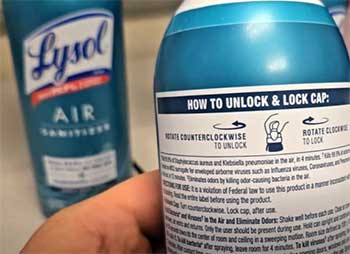
Here’s my biggest complaint: the 12-minute wait time.
You have to close off the room, spray, and then leave it undisturbed for at least 12 minutes to ensure it kills viruses like coronaviruses.
If you’re in a hurry or need to freshen up a space quickly, this can feel like an eternity.
I’ve caught myself pacing outside my bathroom, wishing I could just pop in and out. For bacteria, it’s only 4 minutes, which is more manageable, but the full effect takes patience.
- Limited Residual Effect
Once you reopen the room, the sanitizing effect doesn’t linger. This means you’re not getting ongoing protection after ventilation resumes. I wish there was a way to maintain that sanitized feeling longer, especially in high-risk situations like when someone in the house is sick.
It’s a one-and-done solution, so you’ll need to reapply if you want consistent germ-killing power, which can feel like a hassle if you’re using it frequently.
- Potential for Misuse
The instructions are clear, but I can see how someone might skip them and spray willy-nilly, thinking it’s just an air freshener. If you don’t close doors and vents or spray for the full 30 seconds, you’re not getting the full sanitizing benefit.
I’ve been guilty of half-heartedly spraying when I’m distracted, and it’s less effective. Plus, you need to keep kids and pets out of the room while it’s working, which can be tricky in a busy household.
- Chemical Concerns for Sensitive Users
While I haven’t had issues, I’ve read concerns about the 14% dipropylene glycol in the formula, a chemical used in antifreeze and cosmetics. There’s not enough long-term data on inhaling it, and the remaining 86% of ingredients, including fragrances, aren’t fully disclosed.
My friend with asthma found the spray didn’t trigger her symptoms, but she’s cautious about using it too often. If you’re sensitive to chemicals or have respiratory issues, you might want to test it sparingly first.
Maintenance Tips For Using Lysol Air Sanitizer
- Follow the Instructions Religiously
To get the most out of Lysol Air Sanitizer, you’ve got to stick to the script. Close all doors, windows, and vents before spraying. Shake the can well, then hold it upright and spray toward the center of the room’s ceiling for a full 30 seconds.
I’ve found that setting a timer helps me resist the urge to rush back in. Wait at least 12 minutes for virus-killing power or 4 minutes for bacteria, then reopen the room for ventilation. Skipping steps means you’re not sanitizing effectively, so don’t cut corners.
- Store It Properly
Keep the canister in a cool, dry place away from heat sources like radiators or direct sunlight. I made the mistake of leaving one in my car on a hot day, and the can felt uncomfortably warm. Store it upright to avoid leaks, and make sure the lock is engaged to prevent accidental sprays.
If you have kids, keep it out of reach—my toddler once tried to “help” with cleaning, and let’s just say it was a mess.
- Use It Strategically
You don’t need to spray this every day. I save it for high-risk moments, like after someone’s been sick, when guests are coming over, or in spaces with poor ventilation, like my basement. Overusing it can be wasteful and might irritate sensitive noses.
I typically use it once or twice a week in high-traffic areas, and that’s enough to keep things fresh and sanitized. If you’re dealing with a specific odor, like pet smells, target those areas rather than spraying every room.
- Ventilate After Use
After the 12-minute sanitizing period, open windows and doors to let fresh air in. This not only clears out any lingering chemical smell but also ensures you’re not inhaling the spray’s residue.
I’ve found that cracking a window for 10-15 minutes post-spray keeps the room feeling fresh without compromising the sanitizing effect. If you’re using it in a small space like a bathroom, a quick fan blast helps too.
- Check Your Air Filters
If you’re using Lysol Air Sanitizer regularly, keep an eye on your HVAC system’s air filters. Some users worry that the fine mist could clog filters over time, though I haven’t noticed this in my home.
Still, I check my filters monthly and replace them as needed to ensure my system isn’t working overtime. If you have a HEPA filter running, turn it off during spraying to avoid pulling the mist into the filter too quickly.
Comparison of Lysol Air Sanitizer With Other Brands
- Lysol Air Sanitizer Vs. Ozium Air Sanitizer
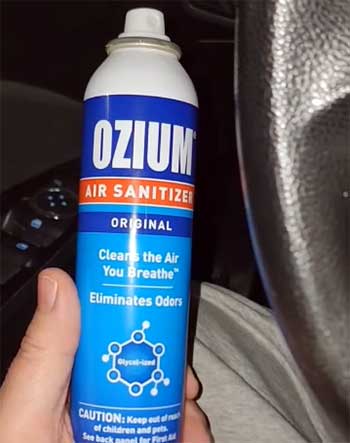
I’ve tested both Lysol and Ozium in my home, and they each have their strengths.
Lysol Air Sanitizer shines with its EPA approval for killing 99.9% of airborne viruses and bacteria, including flu viruses and coronaviruses, after a 12-minute contact time.
Its scents, like White Linen, are subtle and home-friendly, making it ideal for living rooms or bedrooms.
Ozium, on the other hand, is a beast at tackling tough odors like cigarette smoke or car smells, with a shorter 3-5 minute contact time.
Its glycol-based formula works fast but has a medicinal scent that reminds me of a hospital waiting room—not exactly cozy.
Ozium claims to reduce bacteria but lacks Lysol’s virus-killing certification. If you’re focused on health and a pleasant scent, Lysol is the better pick; for heavy-duty odor elimination in small spaces, Ozium might have the edge.
- Lysol Air Sanitizer Vs. Febreze Air Effects
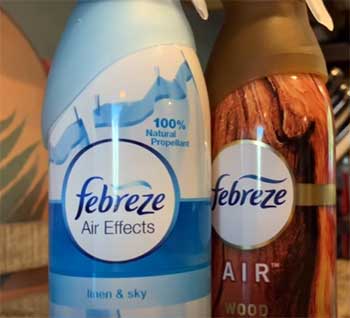
Febreze Air Effects and Lysol Air Sanitizer are like night and day.
I used Febreze for years, drawn to its bold scents like Hawaiian Breeze that instantly mask odors.
It’s cheaper and doesn’t require closing off a room, making it a quick fix before guests arrive.
However, Febreze is purely an air freshener—it doesn’t kill germs or eliminate odor-causing bacteria.
Lysol, with its EPA-backed ability to destroy 99.9% of airborne pathogens, tackles odors at their source while sanitizing the air.
In my kitchen, Lysol erased garlic smells, while Febreze just layered perfume over them. If you want a health-focused solution, Lysol wins hands-down; for a budget-friendly, scent-heavy cover-up, Febreze is still a solid choice.
- Lysol Air Sanitizer Vs. Air Wick Freshmatic
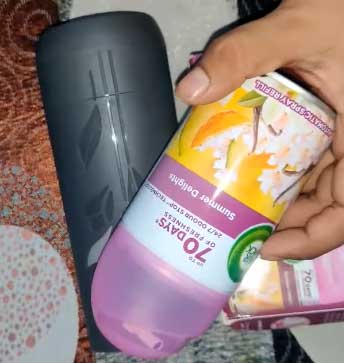
Air Wick Freshmatic caught my eye with its automated spray system, which I tried in my living room.
You set it up, and it releases bursts of fragrance like Lavender & Chamomile at regular intervals, which is super convenient for hands-off freshening.
The scents are lovely, but Air Wick is just an air freshener, not a sanitizer.
It struggled with tough odors like cooking smells, whereas Lysol’s bacteria-targeting formula wiped them out.
Air Wick’s device requires batteries and refills, which can get pricey compared to Lysol’s one-time spray cans. For germ-killing and odor elimination, Lysol is the clear winner; Air Wick is better for low-maintenance, continuous fragrance in low-odor spaces.
Frequently Asked Questions (FAQ)
It depends on your needs. Ozium is fantastic for eliminating strong odors like smoke or car smells, with a quick 3-5 minute contact time. Its medicinal scent isn’t for everyone, though, and it’s not EPA-approved for killing viruses. Lysol Air Sanitizer, with its EPA-backed claim of killing 99.9% of airborne viruses and bacteria, is better for health-conscious homes. Its scents are more pleasant, and it’s versatile for various rooms. If germ-killing is your priority, Lysol wins; for odor-heavy environments, Ozium might be your pick.
When used as directed, Lysol Air Sanitizer is safe for most households. You need to close off the room, spray for 30 seconds, and wait 12 minutes before ventilating. Keep kids and pets out during this time to avoid inhalation. The formula contains 14% dipropylene glycol, which lacks long-term inhalation studies, so if you have asthma or chemical sensitivities, use it sparingly and ventilate well. I’ve used it without issues, even with pets, but always follow the label to avoid irritation.
Lysol Air Sanitizer and Febreze serve different purposes. Febreze is great for quick odor masking with bold, perfumed scents, and it’s cheaper and easier to use—no waiting required. But it doesn’t kill airborne germs. Lysol eliminates odors by targeting bacteria and kills 99.9% of viruses and bacteria, making it ideal for health-focused cleaning. If you just want a pleasant smell, Febreze is fine; for sanitizing and odor elimination, Lysol is the clear winner.
Using Lysol Air Sanitizer is straightforward but requires attention to detail. Shake the can well, then close all doors, windows, and vents in the room. Hold the can upright and spray toward the center of the ceiling in a sweeping motion for 30 seconds. Leave the room for at least 12 minutes (or 4 minutes for bacteria) to let it work. Afterward, open windows and doors to ventilate. Don’t spray near hardwoods or fabrics to avoid slipperiness, and keep kids and pets out during the process.
Conclusion: Why You Should Buy Lysol Air Sanitizer?
After months of using Lysol Air Sanitizer, I’m hooked. It’s not just about making your home smell good—it’s about creating a healthier space by tackling airborne germs and odors at their source.
The EPA approval, subtle scents, and ease of use make it a must-have for anyone who cares about clean air. Whether you’re a parent, pet owner, or just someone who loves a fresh home, this product delivers.
Grab a can and see the difference for yourself—you won’t go back to regular air fresheners.
